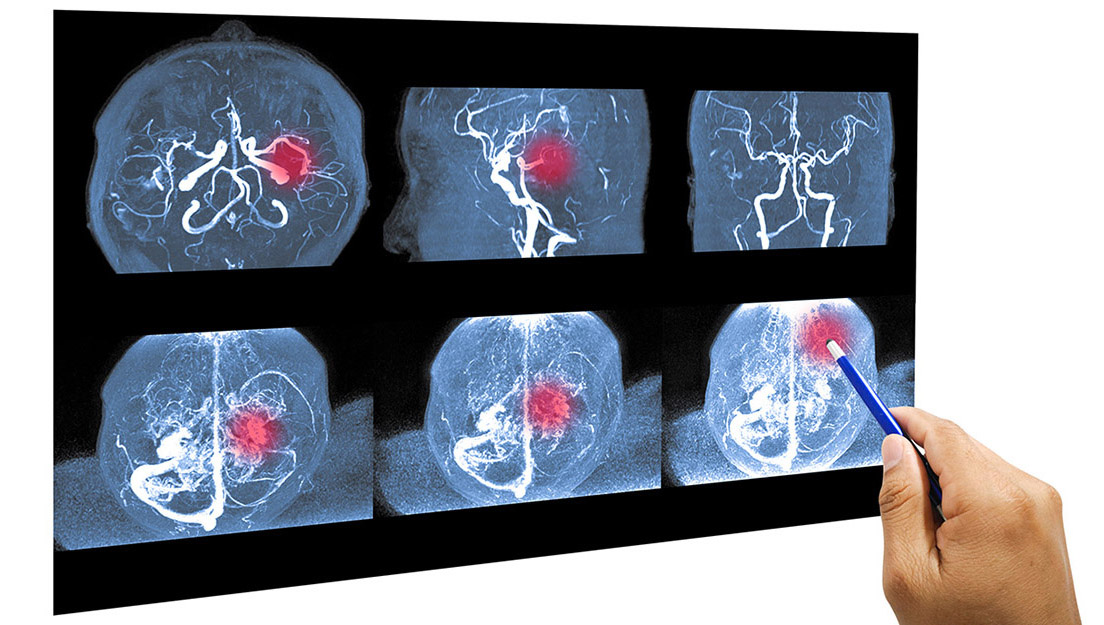
Aneurysm
A cerebral or intracranial aneurysm is a bulge or ballooning of an arterial blood vessel in the brain. If an intracranial aneurysm ruptures, it can result in stroke, brain damage, or death. Therefore, it is important to seek immediate treatment if you experience an unusually severe headache. Other signs of a ruptured cerebral aneurysm may be nausea, a stiff neck, and sensitivity to light.
Most intracranial aneurysms occur between the underside of the brain and the base of the skull. A ruptured aneurysm quickly becomes life-threatening and requires prompt medical treatment. However, most brain aneurysms that don’t rupture still create health problems or cause symptoms. Such aneurysms are often detected during tests for other conditions.
For more information, visit The Brain Aneurysm Foundation at www.bafound.org.
Symptoms
An unruptured aneurysm usually causes no symptoms. A key symptom of a ruptured aneurysm is a sudden, severe headache.Other signs of a ruptured cerebral aneurysm may be nausea, a stiff neck, and sensitivity to light.
Treatment
Treatments for an unruptured aneurysm include medications to control blood pressure and procedures to prevent a future rupture. Emergency medical care is needed for a ruptured aneurysm.
Cerebral aneurysms are treated three different ways:
Endovascular embolization, or coiling, halts the flow of blood into the aneurysm by sealing it off. A relatively new and minimally invasive procedure, it has become the treatment of choice. A catheter is inserted into an artery in the patient’s leg and guided to the aneurysm. Tiny platinum coils are threaded through the catheter and released to fill the entire aneurysm so blood flow into it is stopped.
Clipping is a common surgical treatment. A craniotomy is performed to open the section of the skull so that the surgeons can access the aneurysm beneath. A tiny metal clip is attached to the base of the aneurysm so blood flows past it. This helps prevent possible rupture or re-rupture.
Occlusion and Bypass shuts down the damaged artery and redirects the blood around the occluded artery. A craniotomy is performed to open the section of the skull so that the surgeons can access the aneurysm beneath. If necessary, a blood vessel is taken from another part of the body and grafted to the artery to bypass the occlusion.










